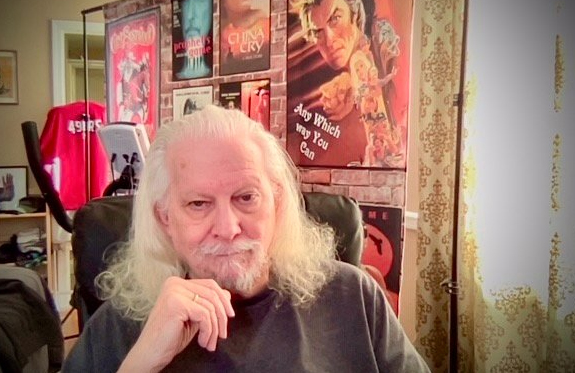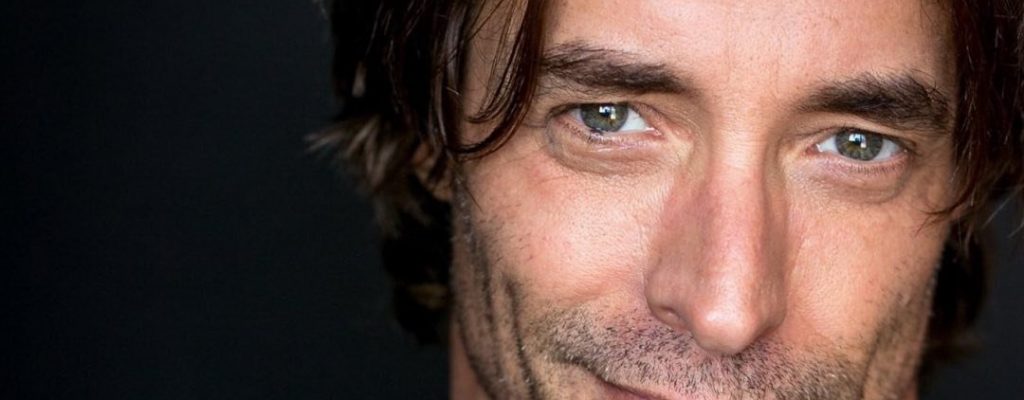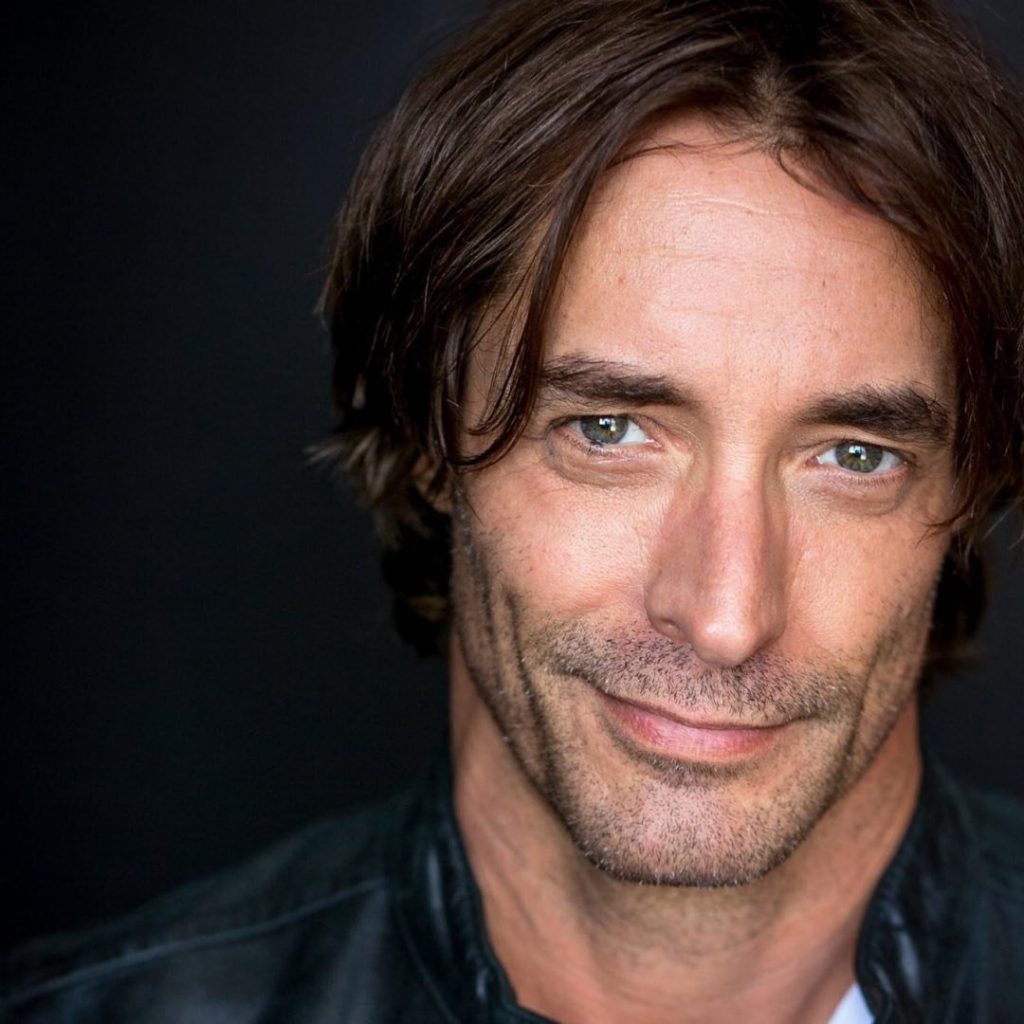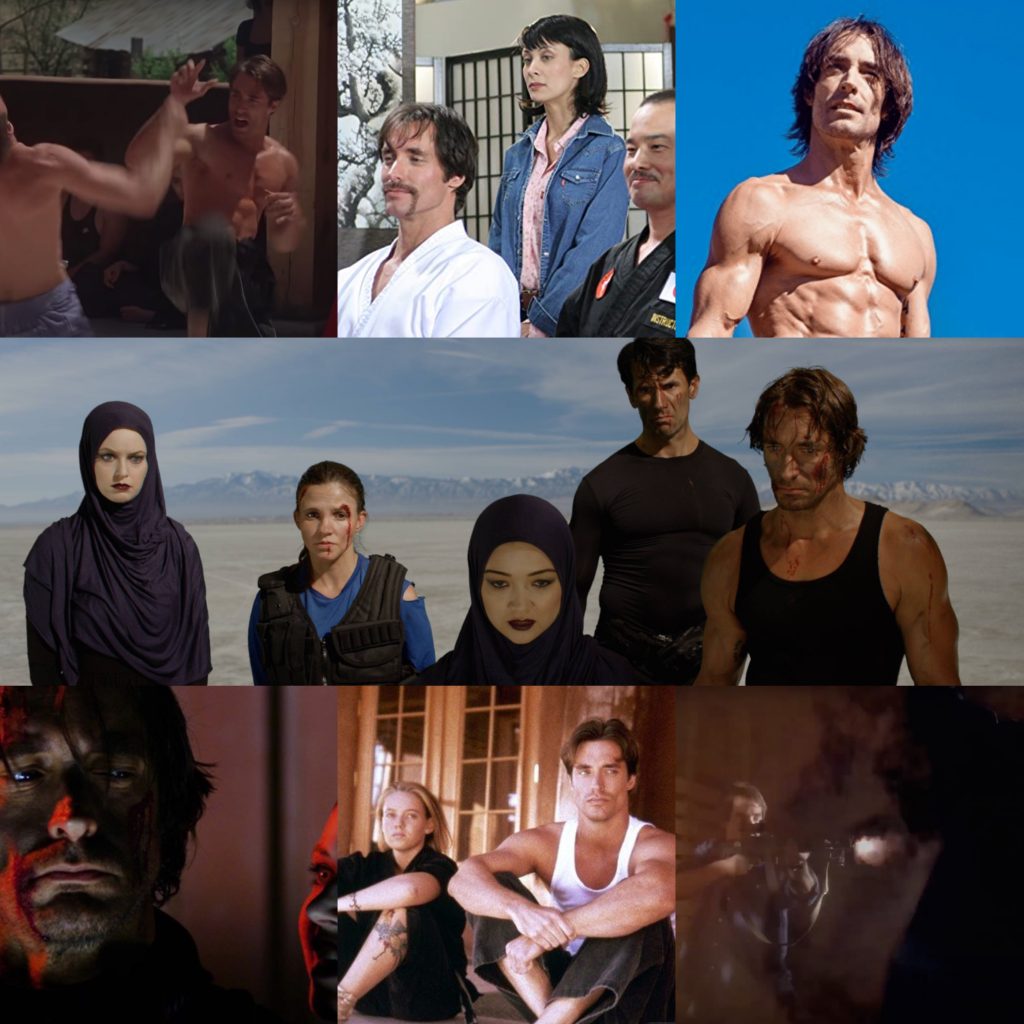
David Worth is an American director of photography and film director. He contributed as cinematographer to more than twenty films, including Bloodsport, Any Which Way You Can, and Bronco Billy. He directed movies such as Warrior of the Lost World (which he also wrote), Lady Dragon, Hard Knocks, and Kickboxer.
Grégoire Canlorbe: In Warrior of the Lost World, a 1983 Italian production,you had the honor to direct legendary actor Donald Pleasence [Dr Loomis in the Halloween saga]. How do you remember this collaboration?
David Worth: I was very honored to work with a gentleman, with the acting acumen and the acting skills of Donald Pleasence, who had been in so many great films. He was in the original Dr. No, he was in Halloween. He was in a great film by Roman Polanski. I’m trying to remember the name of that one. He was in the film The Great Escape with Steve McQueen. He’s truly a great, great, great actor! So I was very pleased to work with him. He was only there for a week of our short schedule, doing his part as Prossor, but he was very prepared, very intense. He even insisted that Persis Khambatta spit in his face for real when it was required for the scene, even though we could have faked it because it was done in cuts. But he insisted that Persis spit in his face to motivate him as Prossor, and I thought that was extraordinary! Mr. Pleasence was a very brilliant gentleman to work with.
Grégoire Canlorbe: What is your view, generally speaking, of the 1960s, 1970s, and 1980s Italian “genre movie,” i.e., giallo, cannibal film, and postapocalyptic? And of movie-directors such as Lamberto Bava, Dario Argento, Umberto Lenzi, and Ruggero Deodato?
David Worth: Dario Argento’s work, I know very well, as well as his daughter’s, Asia Argento. I know their work very well. The others I don’t know because I was never a follower of many of the post-apocalyptic films. Any of the cannibal films, I don’t really know those works. But Dario Argento, I thought, was a fine filmmaker, and he made a lot of very interesting, horrific films in the ’70s and ’80s.
Grégoire Canlorbe: Shark Attack 2 is notoriously better—and much more generous in terms of “shark attacks”—than its predecessor. How did you manage to save that saga that started so poorly?
David Worth: The late, great producer at New Image, Danny Lerner, I had known him for 10 years, and he gave me the script for Shark Attack 2 and asked me to go to Cape Town in South Africa to make it. When I looked at the first Shark Attack, I realized it was a problem because it’s called Shark Attack, but there are virtually no shark attacks in the movie. So from doing second unit work with the great second unit director Glenn Randall and from being a cinematographer and editor for many years, I knew that we needed a lot of pieces to make a shark attack work. So I began to break apart the sequences and analyze what I needed, and I needed several things. First, I needed a real dummy shark, 25 or 30 feet long, that could be towed with a jet ski to go right by the boats, so we could see the size of it. Then, I needed several biting heads, big biting heads that could be operated by stunt divers, and that we could bite the actors with. Then, I needed fins that could be seen on top of the water, that could be driven by stunt actors, stunt divers so that I could have the shark turning left or right or attacking. And then, I also used a lot of real shark stock footage. I used real shark stock footage swimming toward the camera, going left, going right. Then, I would use the pieces that I invented to tie the story together, and we it made it work very, very well.
Grégoire Canlorbe: Were you approached to work on those other cult shark-series that are Mega Shark and Sharknado?
David Worth: No, I was never asked. I was never approached. I wasn’t even approached when New Image did their last shark movie that Danny Lerner directed. I had done my share of shark attack movies. I liked the genre, I had fun with it, and I was ready to move on.
Grégoire Canlorbe: The diptych formed by Lady Dragon and its sequel-remake is a climactic point in your career as a movie director. How did you get the best from Cynthia Rothrock?
David Worth: Cynthia is still and was once one of the very best actors in martial arts. I loved her work. I loved working with her. Even though they are martial artists, they are actors first. I just had to sit her down and talk with her about the part, about her responsibilities, about her emotions. And as long as I gave it the time, she would come up with the proper emotion. The thing I remember most about Cynthia is, we were working in Indonesia. There was no craft service. There was no place to go to the bathroom. I said, “Where’s the bathroom?” They pointed out there. That tree, that’s the bathroom. She was tough. She had been trained in Hong Kong Action! Cynthia started her career there in Hong Kong where they treat stuntmen like disposable cups. They just go through them. And she was really quite brilliant to work with, Cindy was out there every single day in the heat and the dust and the dirt, doing all the kicks and all her own stunt work. I continue to admire her so very much and would be thrilled to work with her again…
Grégoire Canlorbe: Would you be ready to direct a third installment in the Lady Dragon saga, starring Rothrock again?
David Worth: I already have a part three for Lady Dragon. If she’s ready, I’m ready to do it anytime. I have the script. Unfortunately, no one’s interested. They say that Cynthia and I are too old… But I’m ready and I know Cynthia is ready. She’s beautiful. She’s still in shape and still beautiful. I see her on Facebook & Instagram every day.
Grégoire Canlorbe: Your work as a cinematographer on Bloodsport is never so moving, impactful, as in those scenes featuring an alone Jean-Claude Van Damme strolling, meditating, and training in Hong Kong with Stan Bush’s song, “On My Own,” as a background score. Please tell us about the creative process behind such images.
David Worth: Bloodsport was a very unique film to be part of. I was at the right place at the right time. Jean-Claude was at the right place at the right time. Everything came together in Hong Kong. We were the smallest film done by Cannon films that year. They were busy doing big $20 and $30 million movies, and we had a little two and a half… $2,300,000 movie in Hong Kong. Nobody paid attention to us. Jean-Claude was at the beginning of his career, and again, he was an actor first. So, he was ready and willing to do anything and everything to show his acting talent, as well as his martial arts. We captured all the footage we needed of him, and then later in post-production, we found the right song to use to help the mood of that scene, which turned out very, very well. He was brilliant and still is a brilliant martial artist and actor.
Grégoire Canlorbe: Please tell us about the filming of that scene with Jean-Claude Van Damme overhanging the city like a demigod contemplating Greece from the summit of Olympus?
David Worth: When he’s up on the top of the hill with his legs spread over looking the whole city? We took a tram all the way up to the top with all our equipment and lined it up so that we could get that shot. It wasn’t easy. But everyone in Hong Kong was willing to help out and help us to make a good film. We had a great Hong Kong producer named Charles Wang at Salon Films, who was actually the godfather to my son, David, and a great man. And he’s not with us any longer. But he was so helpful in getting both Bloodsport and Kickboxer made with the best possible crew and the best possible Panavision equipment on the planet.
Grégoire Canlorbe: Did JCVD and Michel Qissi contribute to the movie’s filming at another level than their acting (respectively as Kurt Sloane and as Tong Po)?
David Worth: They did because they were both martial artists. Jean-Claude mostly did the choreography. He did most of the choreography for all of the fights because that’s his area of expertise, and I encouraged him to do it. Michel was the very, very bad man, Tong Po, in that movie. He’s a sweet man. He’s very gentle. He’s a real gentleman. But in that movie, he played a very evil man, Tong Po.
Grégoire Canlorbe: How did Mark DiSalle exactly contribute to Kickboxer’s directing?
David Worth: I was hired as the director for Kickboxer. I supervised the casting. I polished the script. I storyboarded the entire production. I was there for every “action and cut.” I supervised all of the fights. Now, Jean-Claude was very influential in choreographing all of the fights because that was his area of expertise. But I did all the work of the director, and then Mark DiSalle decided to share my credit just before the film was finished in post-production.
Grégoire Canlorbe: How do you react to the surge of sequels or remakes that Kickboxer or Bloodsport would inspire?
David Worth: First of all, I’m thrilled when anyone can make any film, any time. But I think with Bloodsport and Kickboxer, it’s very difficult to capture the enthusiasm and the camaraderie and the collaboration and the performances and the locations, especially in Hong Kong and Bangkok, that we had when we did Bloodsport and Kickboxer. I know there have been many sequels. I wasn’t involved in any of them. I don’t think they captured what we were able to capture with the original. They may have been much more expensive, but they didn’t have the heart and soul that our films had.
Grégoire Canlorbe: As a cinematographer you collaborated twice with Clint Eastwood. Namely in Clint Eastwood’s Bronco Billy and in Buddy Van Horn’s Any Which Way You Can, both starring Eastwood and his then girlfriend and muse Sondra Locke. Quite a fantastic story! How do you sum it up?
David Worth: This is a very long and detailed question. It would take me an hour to discuss that. I will give you the short version. If you want to see the long version, go to www.amazon.com and order my book Zen & The Art Of Independent Filmmaking. All my filmmaking is in that book. In those hundreds of pages, I go through all my films in detail.
Working with Clint Eastwood happened because of one person, Sondra Locke. I did a little film called Death Game, starring Sondra Locke, Seymour Cassel, and Colleen Camp. After that film had been filming for a week, the director fired the cinematographer, and the producer called me to see if I wanted to take it over. I didn’t want to inherit someone else’s mess, so I asked, “Who’s starring?” When he said, “Sondra Locke, Seymour Cassel, and Colleen Camp”, I said, “Okay, I’m in.” Because I knew Sondra’s work. Sondra had gotten an academy nomination for Heart Is a Lonely Hunter on her first film. Seymour had been nominated for an academy award on John Cassavetes’ film Faces. So I was in. It was a very small production. We only had 13 days to finish what was left to film. Now, they were also shooting wide-screen, anamorphic Panavision. This was my first time using it. I discovered the Panavision camera… even though it was big… it was very ergonomically correct, so I could hand-hold it with no problem. I decided to save time in the production by not using the camera on a tripod, but instead handholding it. I handhold 75 or 85% of that film. We would be sitting in dailies, and I’d say… it would be a closeup of Sondra… and I’d say, “That’s a handhold shot,” and the director, he’d say, “No, it’s not.” I’d say, “Watch it.” Then on screen he would say, “Cut!”, and the camera would go all over the place. That’s how we made it through. It was very long days, but we got it all done.
Sondra, Seymour and Colleen were brilliant. They did a great job. Seymour and the producer had a falling out, and he never came in to do the dubbing. So I ended up having to dub his voice. The film was being edited by someone who did not appreciate the material, and after 6 or 8 weeks the director, Peter Traynor, called Sondra and I to see a screening of a rough cut… It Was Awful. It was horrendous. Sondra was sitting like this the whole time, with her head down, she couldn’t even look at it. During the screening, I kept shouting, “Where’s this shot?”, “Where’s this shot?”, “Where’s this shot?” Finally, after the screening was over, I had the director, take Sandra and me to the editing room, where I was able to find the shots and fix several of the scenes to show him how they hadn’t been cut correctly. So Peter fired the editor and I became the cinematographer and editor on Death Game and finished it professionally. Sondra had asked me, “Please finish this film so I can be proud of it,” and I did. As we know, Sondra went from that film to The Outlaw Josey Wales with Clint Eastwood, and began a 15-year relationship… That was how I got to Clint, because Sondra began nudging Clint about my work.
A couple of years down the road, Sondra and Clint did the film The Gauntlet. It was just those two, Sondra and Clint, up on the big screen, one-on-one. After I’d seen the film, I called her and said, “I’m so proud of you up there, co-starring with Clint”, giving him all he could handle as the actor. I said, “It was a great job.” She said, “Yeah, we had a great time.” But he had a big fight with his cinematographer because he wouldn’t shoot by campfire light. I said, “What? I just shot a whole off-road motorcycle movie by campfire light.” Then Sondra asked me a question, that would change my life as a cinematographer. She said, “You wouldn’t happen to have a reel of that you could drop off for Clint to see, would you?” I said, “Yes, I would.” That’s how Clint saw my work. A couple of years later, he saw more of my work. And that’s how I eventually did Bronco Billy. But it was a long process. It took several years for it to happen.
Grégoire Canlorbe: Boxing, mentorship, and tetraplegia are topics common to your Kickboxer and to Clint Eastwood’s Million Dollar Baby. How do you assess the way those topics are treated in Clint Eastwood’s movie?
David Worth: The only one I really relate to… I don’t relate to boxing, I don’t relate to the medical condition, I do relate to mentoring. We all need mentors, and that film was basically about an old trainer who took this young lady and mentored her into becoming a championship boxer. I relate to that because I had two great mentors in my life that helped me in my cinematography and in lighting and directing, and they were Stanley Kubrick and Clint Eastwood.
Stanley Kubrick, I was able to use him to mentor me because when I was editing Death Game… during the Post-Production of Death Game, I managed to get my hands on a 35-millimeter print of A Clockwork Orange. I had been a fan of that film ever since it was released, but I could never study it because… This was early 1970s. There was no VHS, there was no DVDs, there was, no Online, there was no Netflix, nothing. The only way to study a movie was to see it on the screen. And then, the projectionist would not play it again for you to study your favorite scenes. So, when I got my hands on this 35-millimeter print of A Clockwork Orange I was ecstatic!. I took all my work off the old upright Movieola and put Mr. Kubrick’s work on it… Then I spent hours running it forwards and backwards, & finally I discovered that Mr. Kubrick was building all his lighting into the sets and locations. Do you know Clockwork Orange?
Grégoire Canlorbe: Yes, one of my favorite movies when I was a teenager.
David Worth: You know the scene where Little Alex kills the Cat Lady with the sculpture of the giant phallus? When I was running the film, forward and backward. Suddenly, I hit the break and said: “What the fuck?” I couldn’t believe what I was seeing. Because at the end of that scene, Mr. Kubrick is following the Cat Lady and little Alex 360 degrees around that location. And he’s using a very wide-angle lens, like a 16 or 18-millimeter lens. I could see all four walls, the floor, and the ceiling, and I suddenly realized there were no movie lights. There were NO MOVIE LIGHTS! This was no student film. This was no Roger Corman film. This was a Stanley Kubrick production of a Warner Brothers film that had been nominated for four Academy Awards! I was stunned! I was flabbergasted! I was gobsmacked! I couldn’t believe what I was seeing! I slowly went back and froze the frames where I could see all the lighting… That’s when I discovered exactly what Mr. Kubrick had done! And that was to bring in several light sculptors, one in the form of a spiral, one in the form of a Christmas tree, others in bunches, each containing a lot of 150-watt bulbs. Then he plugged them into the wall sockets, said “We’re lit!” and shot the scene!
Discovering THAT changed my life as a cinematographer. I even wrote an article in the American Cinematographer magazine, entitled, “If it’s good enough for Mr. Kubrick…” Why don’t more of us use this technique? It’s brilliant, because it’s actor-friendly and production friendly. If you build the lighting into the set, you can shoot 360 degrees. You never have to change the lighting when the director says, “Okay, I’m done in this direction. I’m going to shoot in the other direction…” I’ve been on the set where the director says, “Okay, I want to shoot the other way.” The DP says, “Okay, give us two hours to reset the lights.” I say Bullshit! And more importantly Mr. Kubrick said, “Bullshit!”
And he began building all the lighting into the sets of his films, starting with Dr. Strangelove… 2001: A Space Odyssey, Clockwork Orange, and then, of course, the candlelight scenes in Barry Lyndon. This is the technique I brought to Bronco Billy. This is what I brought to Clint Eastwood.
Grégoire Canlorbe: So, the connection between Clint Eastwood’s Bronco Billy and Stanley Kubrick is not only Scatman Crothers who acted in both Bronco Billy and The Shinning released the same year; it is also David Worth.
David Worth: Right! Because I brought the “Kubrickian Technique” of building the lighting into the sets or locations to Bronco Billy! We had a huge circus tent, and I said, “Okay, I want all the lighting built into this tent.” So, up high between the two upright tent poles, I had a connecting pole as well as two additional poles at right angles forming a “T…” Then we placed all our lighting onto these poles and the entire set was lit! I could walk in at 7:30 in the morning, hit the switch, take a reading with my light meter and say, “Okay, f2.8 in every direction, let’s shoot!” We did 40 or 50 setups a day. On a Warner Brothers film starring Clint Eastwood that would normally do 10 or 15 setups a day!
Clint is a very efficient and very fast director. 75% of the time, he prints either the rehearsal or the first take. So everyone is on their toes. They don’t want to displease the Big Guy. So, he always comes in several days ahead of schedule. However, on Bronco Billy, he didn’t come in several days ahead of schedule. As a result of my building the lighting into all the other sets and locations, we came in two and a half weeks ahead of schedule, saving the production over a million dollars! That’s how I got to capture two Clint Eastwood films instead of one.
Grégoire Canlorbe: Did you like Kubrick’s last movie, Eyes Wide Shut?
David Worth: Didn’t like it… However, my only regret is that Stanley Kubrick didn’t get a chance to come into this century. He died in the 1990s. He began as a still photographer and was shooting SLR, single lens reflex 35-millimeter cameras. However, he never got his hands on a DSLR, the digital version. These cameras shoot from ISO 100 all the way up to ISO 400,000. Trust me… He would have stood it on its ear, just like he did the Steadicam! That’s my regret: that Mr. Kubrick never got his hand on the DSLR that had a virtually unlimited ISO!!!
Grégoire Canlorbe: Our interview comes to its end. Is there anything you would like to add?
David Worth: Yes, there is something I would like to add. Clint Eastwood is a brilliant filmmaker. I loved his work, decades before I worked with him. He’s now 92 years old. He’s had an over 50-year relationship with Warner Brothers, doing huge productions: the Dirty Harry films, all very big hits. As well as his Academy Award winners like Mystic River & Million Dollar Baby & Unforgiven!!! The latest corporate-bottom-liner at Warner Brothers just severed their relationship with Clint after 50 years because his last film, Cry Macho didn’t make money. This is a guy who is the icon of icons. He’s been making hit movies longer than anyone has been around in this town. The icon of icons!!! At 92 years old, he should have carte blanche for anything he wants to do from here on out. Carte Fucking Blanche! Instead, these moronic assholes get rid of him because his last $20 million movie didn’t make enough money. And then they spend $200 million on the other big budget crap they churn out, on each of these comic-book-super-duper-hero movies. Have some respect for your elders! The stars who put WB on the map! That’s what I’d like to say!
Grégoire Canlorbe: Thank you for your time. I was wondering: how do you feel about the breakup between Eastwood and Locke?
David Worth: It was an awful breakup. I hated to see it. It should never have happened… I never thought I would even meet Clint. It wasn’t on my radar because I knew I was making my little films on the side streets of Hollywood, and he was: “Clint Eastwood.” It was only because I did that little film, Death Game,… Sondra Locke who was the star of that film, liked my work & when she began working with Clint, she mentioned me, to him… That’s how I got my foot in the door, through the brilliant and insightful and compassionate Sondra Locke. And I’m eternally grateful…
That conversation was originally published on Bulletproof Action, in March 2023


